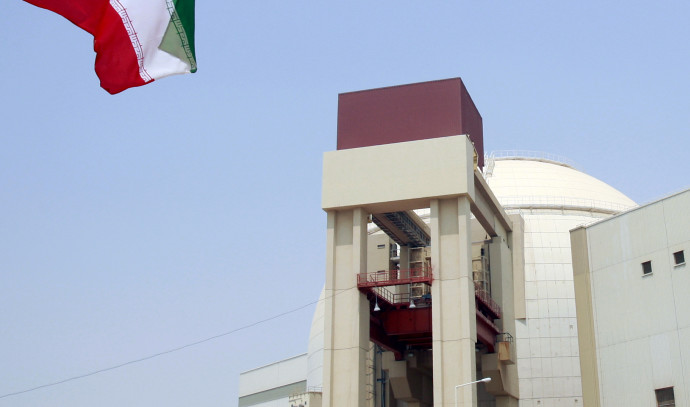The Iranian ayatollah regime attacked Israel directly from its own territory, deploying hundreds of UAVs, cruise missiles, and ballistic missiles.
This was a significant departure from the usual Iranian method of operation through proxies in the region.
Despite Iranian leaders claiming that the attack was a response to an Israeli strike near the Iranian embassy in Damascus, the reasons for this shift in approach are much more complex than they seem.
Clearly, Khamenei did not expect the Israeli response to turn out the way it did.
A global defense coalition formed (including the US, UK, France, Jordan, and others) stood by Israel, effectively repelling the unprecedented attack, which in turn humiliated Iran and exposed inherent weaknesses in its attack systems against defensive capabilities.
These capabilities include Israel’s multi-layered defense system, which has been built over decades—Arrow, David’s Sling, Iron Dome, Patriot, interceptor aircraft, and others.
The coalition intercepted over 95% of the threats, with Israel intercepting most of them. The few threats that got through caused little significant damage.
Iran still must be held accountable for their attack
However, this does not diminish the need to hold Iran accountable for its exceptional attack. The Israeli response, immediate but also intended to have a lasting impact, was not based on the success of the attack but on Iran’s intention to cause destruction.
In a previous article, I suggested that Israel could respond by targeting one or more of the following: infrastructure directed against it, such as UAV and cruise missile factories, Iranian infrastructure facilities (like oil, gas, pipelines), or the nuclear program, focusing on the weapons program and its leading scientists.
This could also send a message about Israeli capabilities, potentially even targeting a symbolic icon of the Iranian regime or government.
Israel decided independently on the nature, scale, and timing of the response and carried it out, according to foreign reports. Israel informed its close ally, the USA, but did not seek its permission or participation.
The Israeli response reportedly included striking key elements in the Iranian defense infrastructure, such as the fire control radar of a Russian S-300 battery, considered the pinnacle of the systems Russia supplied to Iran to protect its nuclear facilities and other strategic sites. This also included other radar systems.
Viewed positively, this attack can be seen as a brilliant example of an “eye for an eye” approach, though with a sophisticated Israeli touch.
Despite its limited scope, it may seem to some Israelis to be too weak or disproportionate compared to the massive Iranian attack.
Yet, Israel’s technological and operational capabilities, demonstrated in defending against the massive Iranian assault, were showcased again, this time in the offensive response.
To demonstrate capability and send a message without intending to punish or severely damage specific infrastructure, a limited but strategic attack deep into Iran against critical defense systems can suffice.
As it stands, Israel seems to have triumphed in both defense and offense.
With much less than a tenth of the Iranian attack force, the damage caused and the message conveyed were much greater than the Iranian achievement.
It is important to highlight that Israel responded despite American pressure not to do so, and the USA provided unprecedented security assistance shortly after the attack.
This suggests that, despite American reluctance to approve a direct response, they did not interfere with Israel’s actions.
Iran attacked an Israeli air force base, while Israel targeted an Iranian air force base.
Israel’s attack in return
The Iranian attack aimed to damage aircraft and auxiliary capabilities, while the Israeli response, according to reports, launched missiles that struck defense systems.
This demonstrated to Iranians and Russians that their defense systems are not invulnerable and may not be able to protect even themselves. This serves as a message to Iranians, Russians, and Americans alike.
Although Israel did not target Iranian nuclear facilities or their support infrastructure, the areas attacked were near significant strategic nuclear facilities, including the conversion plant and the enriched uranium storage site.
This sends a clear message: “Your defenses are penetrable, and next time, the target could be your nuclear infrastructure.”
Despite the clear messages conveyed by Israel’s response, the balance remains uneven.
It’s crucial to maintain focus on Gaza to achieve the war’s goals, including Rafah, the Philadelphi route, and addressing the situation in the north, while still working to prevent Iran from exploiting regional chaos to advance its nuclear program.
The “ring of fire” Iran constructed around Israel over the years has shown cracks due to Iranian miscalculations.
Israel must capitalize on this momentum and start dismantling this “ring of fire” while building an international coalition.
However, it’s crucial to recognize that a defensive coalition might work, but there’s little hope for an offensive coalition against Iran. Israel must rely on itself.
Brigadier General (Res.) Jacob Nagel is a Senior Fellow at the Foundation for Defense of Democracies (FDD) and a professor at the Technion. He served as the National Security Advisor to Prime Minister Benjamin Netanyahu and as the Acting Head of the National Security Staff.







